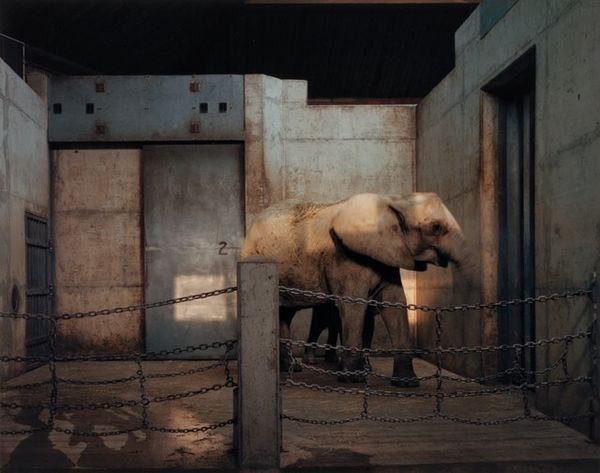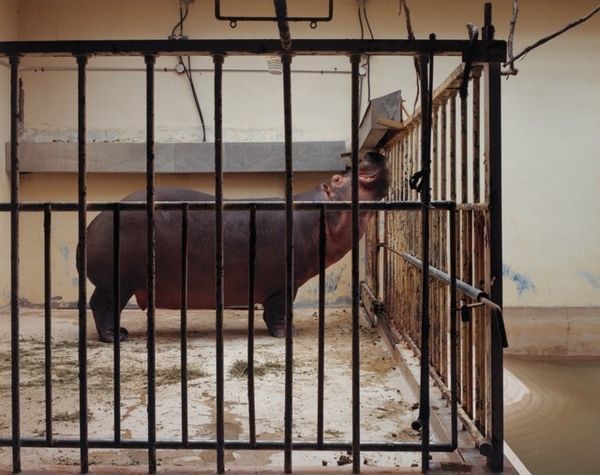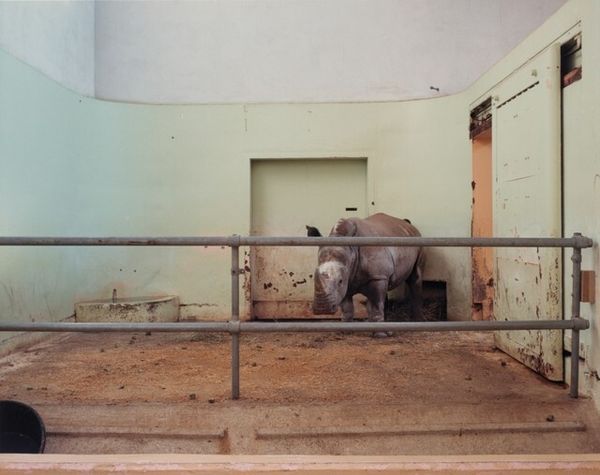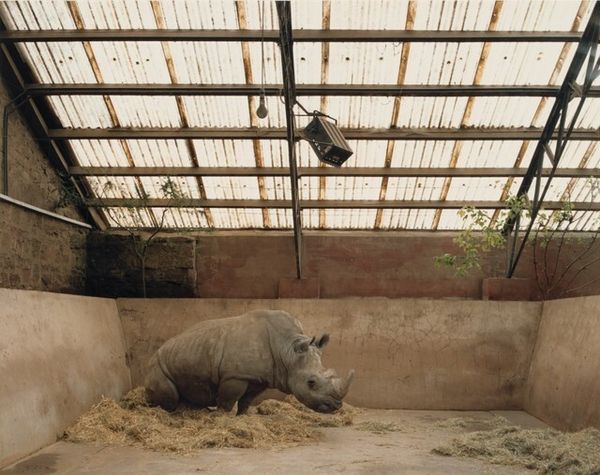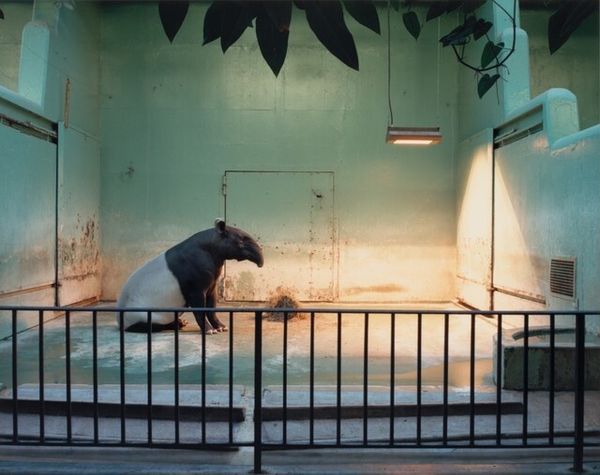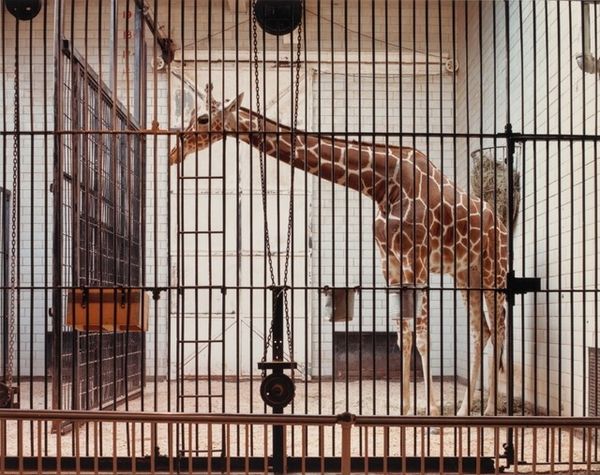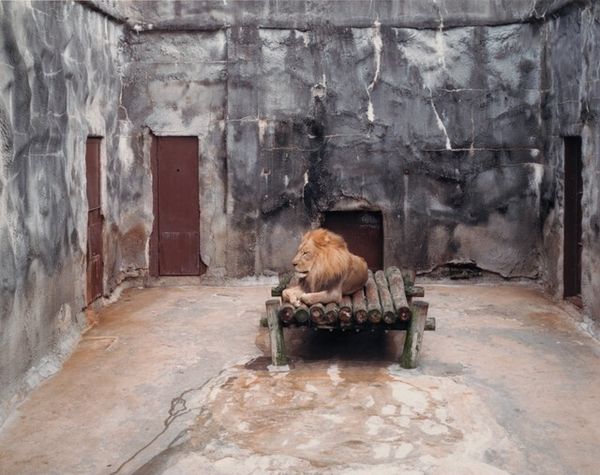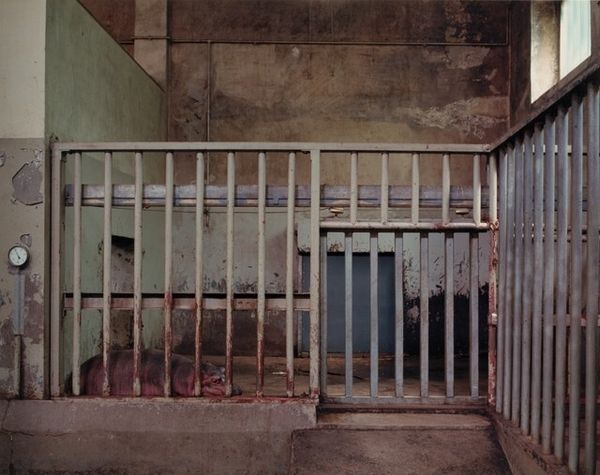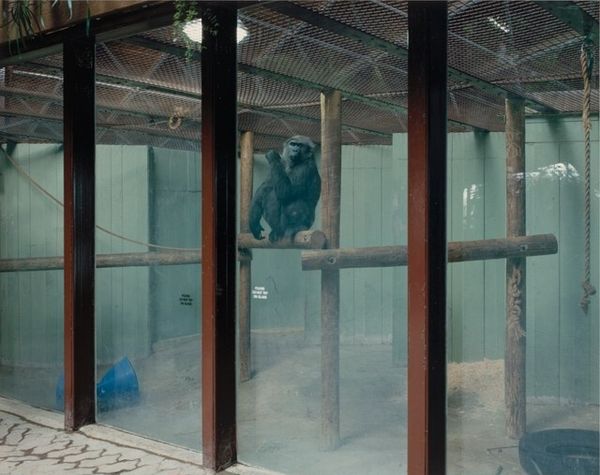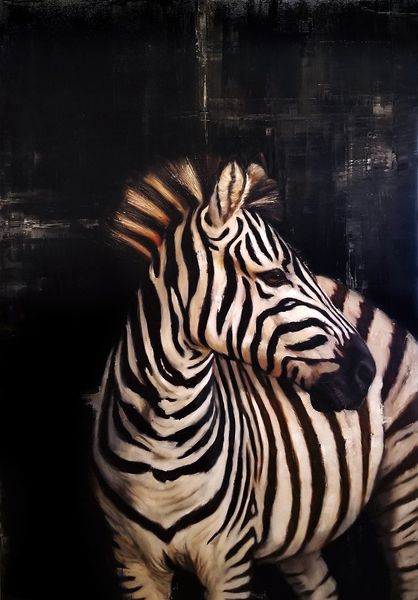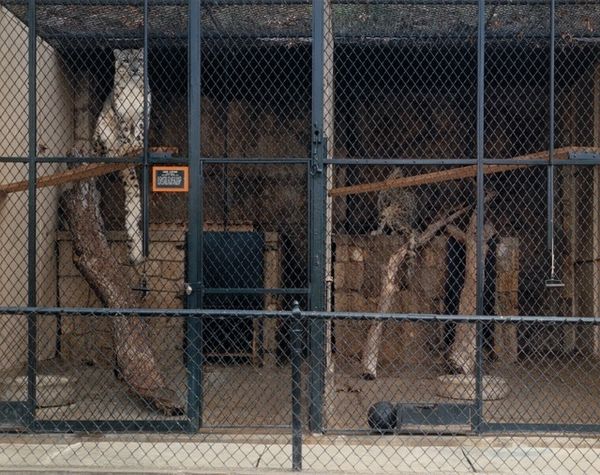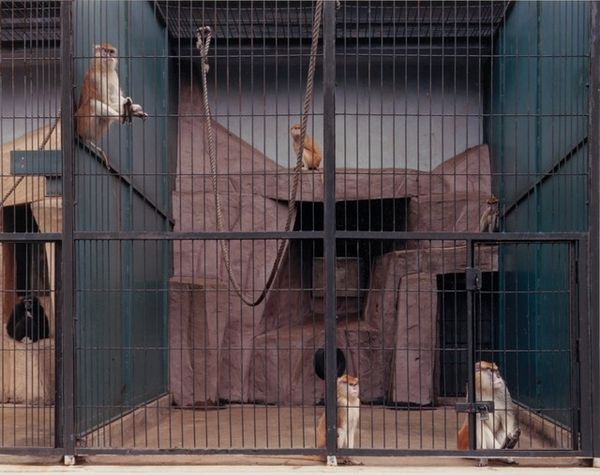
Indian Rhinoceros, National Zoo, Washington D.C. Possibly 1986 - 1988
0:00
0:00
photography
#
portrait
#
public art
#
still-life-photography
#
animal
#
photography
#
public art photography
#
realism
Dimensions: image/sheet: 16 × 20 cm (6 5/16 × 7 7/8 in.) mount: 20.32 × 25.4 cm (8 × 10 in.)
Copyright: National Gallery of Art: CC0 1.0
Curator: The photograph before us is titled "Indian Rhinoceros, National Zoo, Washington D.C." It’s believed to have been taken between 1986 and 1988 by Volker Seding. Editor: My immediate impression is one of stark confinement. The harsh, symmetrical bars and the subdued, almost monochromatic palette evoke a feeling of deep restraint. Curator: The bars undeniably become a powerful symbol here, don’t they? A cage representing, perhaps, our own limitations as well as those we impose on nature. Consider the rhinoceros itself – its thick hide, historically symbolic of resilience and even invincibility, rendered vulnerable in this context. Editor: Precisely. And the photographer's careful framing heightens this tension. The repetition of vertical lines creates a grid, dissecting the composition, and our gaze. Semiotically, the steel bars almost 'speak' in the way a painted line could to signal space, structure, even force. The muted tones serve to further dampen our experience. Curator: It's intriguing how the lack of vibrant color actually amplifies the texture – the rough, almost fossilized skin of the rhino and the weathered surfaces of its enclosure both become powerfully evident. We can nearly feel the coarse textures simply by looking. I think there's a psychological weight in that. Editor: Absolutely. Note, too, how Seding utilizes light – or the relative lack of it. The diffused, even illumination washes over everything, denying any strong shadows that might lend dramatic flair. It reinforces a sense of oppression through that evenhanded flatness. The bars cast their own repeating shadow, subtly. Curator: This makes one wonder about the broader narrative the artist intends to convey. Is this about conservation, captivity, or our relationship with the natural world? Rhinos throughout history were powerful images, linked to medicine, strength and untamed freedom. How do you think the photograph plays against the animal’s historic symbolism? Editor: This feels far less a celebratory wildlife portrait and far more a stark commentary. It's not just the bars, but the way the animal occupies a liminal space, turned inward, withdrawn. Curator: A silent monument to diminished majesty, I suspect. Editor: Ultimately a sad tableau— but expertly constructed from a formal perspective to highlight its solemn impact.
Comments
No comments
Be the first to comment and join the conversation on the ultimate creative platform.
